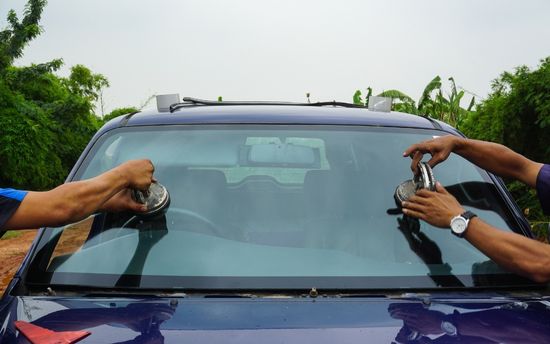Drive Chip-Free: Expert Tips on How to Prevent Windshield Chips

As a responsible driver, you understand the importance of vehicle maintenance, safety, and appearance. While many aspects of car care are well-known, one often overlooked area is the windshield. Windshield chips might seem like minor inconveniences, but they can lead to significant problems if left unaddressed.
From reduced visibility to compromised structural integrity, the impact of windshield chips can be far-reaching. In this comprehensive guide, we will delve into the world of windshield chip prevention, offering expert tips to help you maintain a clear, chip-free windshield and ensure your safety on the road.
Understanding Windshield Chips
Before we delve into the prevention strategies, let’s take a closer look at the common causes and types of windshield chips.
Causes of Windshield Chips
Windshield chips are a common issue faced by many drivers, and they can occur due to various factors. Understanding the causes of windshield chips can help you take preventive measures and maintain the integrity of your vehicle’s glass. Here are some of the primary causes of windshield chips:
1. Road Debris:
One of the most frequent causes of windshield chips is road debris. As you drive, your vehicle can encounter pebbles, rocks, gravel, and other small objects that are kicked up by other vehicles. These objects can impact your windshield at varying speeds, leading to chips or cracks.
2. Construction Zones:
Driving through construction zones exposes your vehicle to a higher risk of encountering loose materials such as gravel, sand, and asphalt fragments. The movement of construction vehicles and machinery can dislodge these materials and cause them to hit your windshield, resulting in chips or even larger cracks.
3. Highway Driving:
When driving on highways, you’re more likely to encounter fast-moving vehicles, trucks, and buses. The tires of these vehicles can throw up debris from the road, increasing the chances of your windshield being struck by small rocks or other materials.
4. Temperature Fluctuations:
Drastic temperature changes can stress the glass of your windshield, potentially leading to chips. For example, if your windshield is exposed to direct sunlight on a hot day and then cooled suddenly by air conditioning or a cold breeze, the glass can contract and expand, making it more vulnerable to damage.
5. Impact from Objects:
Sometimes, larger objects such as tree branches, fallen fruits, or items thrown from other vehicles can impact your windshield and cause chips. Even seemingly harmless objects can create enough force to damage the glass.
6. Hailstorms:
Hailstorms, especially those with larger hailstones, can cause significant damage to windshields and other glass surfaces on your vehicle. Hailstones impact the glass with force, leading to chips, cracks, and even shattered windows in severe cases.
7. Improper Installation:
In some cases, improper installation of the windshield can lead to stress points or weak areas, making the glass more susceptible to chips and cracks over time.
8. Vibrations and Shocks:
Vibrations from rough roads, potholes, and speed bumps can stress the glass over time, making it more prone to chips. Even minor impacts, like slamming car doors, can send vibrations through the vehicle and contribute to windshield damage.
9. Chemicals and Contaminants:
Harsh chemicals and contaminants from the road, such as salt, can weaken the glass over time. These substances can create small pockmarks on the surface of the windshield, which can eventually lead to chips under the right conditions.
10. Age and Wear:
Older windshields, especially those with accumulated wear and tear, may be more susceptible to chips and cracks. Over time, the structural integrity of the glass can deteriorate, making it more vulnerable to impacts.
Preventing windshield chips involves adopting safe driving practices, maintaining a safe following distance, and being aware of road conditions. Additionally, regularly inspecting your windshield for small chips and promptly addressing them through professional repair can help prevent these minor issues from developing into larger and more expensive problems.
Types of Windshield Chips
Windshield chips come in different shapes and patterns, each with its own characteristics and potential impact on the integrity of your windshield. Understanding the types of windshield chips can help you identify and address them early, preventing further damage. Here are the common types of windshield chips:
Bullseye Chip:
- Appearance: The bullseye chip is characterized by a circular impact point with a dark center. It resembles a target’s bullseye, with cracks radiating outward from the center.
- Size: Bullseye chips can vary in size, but they typically have a diameter of around 1 inch or larger.
- Cause: Bullseye chips often result from a direct impact by a rounded object, such as a small rock or pebble.
- Repairability: Bullseye chips are usually repairable if the damage is relatively small and the structural integrity of the glass is not compromised.
Star Chip:
- Appearance: The star chip features multiple cracks that extend from a central point, creating a pattern resembling a star or a spider web.
- Size: Star chips can vary in size, but they typically have multiple legs extending outward from the center.
- Cause: Star chips are usually caused by a more forceful impact, such as a larger rock or object hitting the windshield.
- Repairability: Repairing star chips depends on the size and extent of the cracks. Smaller star chips can often be repaired successfully.
Combination Chip:
- Appearance: Combination chips combine characteristics of different chip types. They can have features of both bullseye and star chips, often resulting from complex impacts.
- Size: The size of combination chips varies based on the impact that caused them.
- Cause: Combination chips typically occur when an object strikes the windshield with enough force to create multiple types of damage.
- Repairability: Repairing combination chips depends on the specific damage patterns and the overall condition of the windshield.
Half-Moon Chip:
- Appearance: The half-moon chip has a curved shape with a semi-circular impact point and cracks extending outward.
- Size: Half-moon chips are usually smaller in size, with the impact point resembling the shape of a half moon.
- Cause: Half-moon chips are commonly caused by medium-sized objects hitting the windshield at an angle.
- Repairability: Small half-moon chips can often be repaired effectively if the structural integrity of the glass is intact.
Partial Bullseye Chip:
- Appearance: Similar to the bullseye chip, the partial bullseye chip has a circular impact point but lacks complete circular cracks.
- Size: Partial bullseye chips can vary in size, and the cracks radiate outward from the impact point.
- Cause: Partial bullseye chips result from medium-force impacts that create a central impact point and cracks that may not fully encircle the impact.
- Repairability: Repairing partial bullseye chips is possible, especially when the cracks are not extensive.
It’s important to note that the repairability of windshield chips depends on various factors, including the size of the chip, the depth of the impact, and the extent of the cracks. In general, addressing windshield chips promptly through professional repair is recommended to prevent them from growing into larger cracks that may require a full windshield replacement. Regularly inspecting your windshield for any signs of damage and addressing chips early can help you maintain the structural integrity and safety of your vehicle.
Expert Tips to Prevent Windshield Chips
Now that we understand the causes and types of windshield chips, let’s explore expert tips that can help you proactively prevent them.
1. Maintain a Safe Following Distance
Avoid Tailgating: Keep a safe distance from the vehicle in front of you. This reduces the risk of debris thrown up by their tires hitting your windshield.
2. Drive Defensively
Anticipate Road Conditions: Stay alert to changes in road conditions, such as construction zones or gravel roads. Slow down and exercise caution when navigating these areas.
3. Avoid Large Trucks
Stay Back: Trucks can kick up larger debris due to their size and weight. Maintain a safe distance when driving behind or alongside trucks.
4. Use Mud Flaps
Install Mud Flaps: Consider installing mud flaps on your vehicle. These accessories can help prevent debris and gravel from being thrown up by your own tires.
5. Avoid High-Speed Tailgating
Reduce Speed: On highways, avoid tailgating at high speeds. The impact of debris hitting your windshield at higher velocities can result in more severe damage.
6. Inspect Windshield Regularly
Visual Checks: Conduct regular visual inspections of your windshield for any chips, cracks, or small pockmarks. Catching issues early can prevent them from worsening.
7. Park Smartly
Shaded Parking: Whenever possible, park your vehicle in shaded areas. This reduces direct sunlight exposure and minimizes temperature fluctuations that stress the glass.
8. Use Windshield Sunshades
Sun Protection: Use a windshield sunshade to shield your windshield from direct sunlight. Sunshades can help prevent stress-induced damage.
9. Repair Chips Promptly
Professional Repair: If you notice a chip, have it repaired promptly by a professional. Swift repairs can prevent chips from growing into larger cracks.
10. Avoid Slamming Doors
Gentle Door Handling: Refrain from slamming your car doors. The vibrations from slamming can stress the windshield glass, leading to potential damage.
Maintenance for Chip Prevention
In addition to practicing safe driving habits, maintaining your vehicle properly is essential for preventing windshield chips.
Maintain Tire Tread
Check Tread Depth: Regularly inspect your tires’ tread depth. Worn-out tires can kick up more debris, increasing the risk of windshield damage.
Replace Worn Wiper Blades
Effective Wipers: Worn wiper blades can scratch the windshield’s surface, making it more vulnerable to chips. Replace them at the first signs of wear.
Keep Windshield Clean
Regular Cleaning: Clean your windshield frequently to remove dirt, debris, and chemicals that can weaken the glass.
Avoid Harsh Cleaners
Gentle Cleaning: Use mild and non-abrasive cleaning products when cleaning your windshield. Harsh cleaners can damage the glass over time.
Conclusion
Maintaining a chip-free windshield is essential for safe driving and overall vehicle care. By following expert tips, practicing defensive driving, and regularly maintaining your vehicle, you can significantly reduce the risk of windshield chips. Remember that prevention is key, and investing a little time and attention now can save you from more substantial problems down the road. Drive confidently with a clear view, and enjoy safer journeys on the open road.
Related Articles

What Brand of Tires Should I Stay Away From? Expert Advice and Recommendations
If you’re wondering, “What brand of tires should I stay away from?” – you’re in the right place. In this comprehensive guide, we’ll delve into some tire brands that may not meet your expectations and provide expert advice on making informed decisions for your vehicle.

How Much Car Registration Renewal Costs: A Comprehensive Guide
In this comprehensive guide, we delve into the intricacies of car registration renewal costs, shedding light on what influences these expenses and providing valuable insights for car owners. Whether you’re a seasoned driver or a new car owner, understanding the financial implications of car registration renewal is crucial. Let’s explore how much car registration renewal truly costs and what factors you need to consider.

How to Detail Your Own Car Like a Pro – Tips and Tricks
Detailing your car isn’t just about making it shine; it’s about preserving its beauty, enhancing its value, and protecting it from the elements. Whether you’re a novice or a seasoned enthusiast, this guide will equip you with the knowledge and techniques to achieve professional-level results right in your own driveway.

Top Automotive Affiliate Programs to Boost Your Earnings in 2024
The automotive industry is boasting a staggering $459 billion in accessories alone, with projections indicating a rise to $522 billion within three years. If you’re eyeing a slice of this revenue pie, tapping into the right affiliate programs is essential. Here’s a curated list of top automotive affiliate programs to fuel your earnings.




